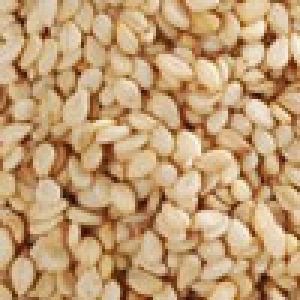
Whitish Sesame Seeds
Grade Black Seeds Other Colour Seeds FFA Purity 99 / 1 Min 99 pct Max 1 pct Max 2 pct also possible Max 1 pct Min 98 pct also possible Min 99 pct, 99.5 pct, 99.9 pct 98 / 2 Min 98 pct Max 2 pct
...more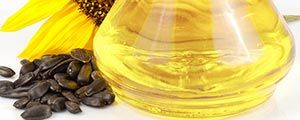
Sunflower Oil
Sunflower oil is the non-volatile oil compressed from sunflower (Helianthus annuus) seeds. Sunflower oil is commonly used in food as frying oil, and in cosmetic formulations as an emollient. The world's largest sunflower oil producers are Ukraine, Russia and Argentina. Sunflower oil is a monounsaturated (MUFA)/polyunsaturated (PUFA) mixture of mostly oleic acid (omega-9)-linoleic acid (omega-6) group of oils.
...more
Sesame oil
Sesame oil is an edible vegetable oil derived from sesame seeds. Besides being used as a cooking oil in South India, it is often used as a flavor enhancer in Chinese, Japanese, Middle Eastern, Korean, and Southeast Asian cuisine. The oil from the nutrient-rich seed is popular in alternative medicine, from traditional massages and treatments to the modern day. The traditional Indian medical practice of Ayurveda uses sesame oil. The oil is popular in Asia and is also one of the earliest-known crop-based oils, but world-wide mass modern production continues to be limited even today due to the inefficient manual harvesting process required to extract the oil.
...more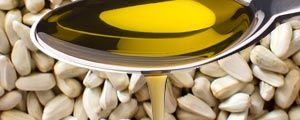
Safflower Oil
Safflower ( Carthamustinctorius) is a minor crop today, with about 600,000 tons being produced commercially in more than sixty countries worldwide. India, United States, and Mexico are the leading producers, with Ethiopia, Kazakhstan, China, the Arab World, Argentina and Australia accounting for most of the remainder. Safflower seed oil is flavorless and colorless, and nutritionally similar to sunflower oil. It is used mainly in cosmetics and as cooking oil, in salad dressing, and for the production of margarine. It may also be taken as a nutritional supplement. There are two types of safflower that produce different kinds of oil: one high in monounsaturated fatty acid (oleic acid) and the other high in polyunsaturated fatty acid (linoleic acid). Currently the predominant edible oil market is for the former, which is lower in saturates than olive oil. The latter is used in painting in the place of linseed oil, particularly with white paints, as it does not have the yellow tint which linseed oil possesses.
...more
Rapeseeds
Predominantly grown in the northern belt of India, the production of this seeds has made rapid progress in the last decade. The biggest advantage is that they can be grown in a wide range of agro-climatic conditions. In India, rapeseed and mustard are grouped together. Amongst the nine major oilseeds cultivated in India, they come second, only after groundnut. The harvest usually takes place in March or April. The oil content in rapeseed and mustard is between 36 and 42 %. Indian mustard, has a pungent flavour and is often used as a spice in the varied Indian cuisine.
...more
peanut oil
Peanut oil, also known as groundnut oil or arachis oil, is a mild tasting vegetable oil derived from peanuts. The oil is available in refined, unrefined, cold pressed, and roasted varieties, the latter with a strong peanut flavor and aroma, analogous to sesame oil. It is often used in Chinese, South Asian and Southeast Asian cuisine, both for general cooking, and in the case of roasted oil, for added flavor. Peanut oil has a high smoke point relative to many other cooking oils, so is commonly used for frying foods. Its major component fatty acids are oleic acid (46.8% as olein), linoleic acid (33.4% as linolein), and palmitic acid (10.0% as palmitin). The oil also contains some stearic acid, arachidic acid, arachidonic acid, behenic acid, lignoceric acid and other fatty acids.
...more
Indian Sesame Seeds
Indian Sesame seeds are offered in different packing as per the buyer's requirement.
...more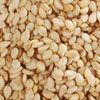
Oil Seeds
India is the world's largest producer of sesame seeds. India produces a wide range of sesame seed varieties and grades each peculiar to the region where they are grown. From Gujarat and it's adjoining states are widely preferred due to its colour and size. Different grades available are:
...more
Rapeseed Oil
Mustard oil has a distinctive pungent taste, characteristic of all plants in the mustard (Brassicaceae) family.It is often used for cooking in North India, Eastern India, Nepal, Bangladesh and Pakistan. In Bengal, Orissa, Assam and Nepal, it is the traditionally preferred oil for cooking. The oil makes up about 30% of the mustard seeds. It can be produced from black mustard (Brassica nigra), brown Indian mustard (B. juncea), and white mustard (B. hirta). The characteristic pungent flavour of mustard oil is due to allylisothiocyanate. Mustard oil has about 60% monounsaturated fatty acids (42% erucic acid and 12% oleic acid); it has about 21% polyunsaturated fats (6% the omega-3 alpha-linolenic acid and 15% the omega-6 linoleic acid), and it has about 12% saturated fats. Rapeseed (Brassica napus) is a bright-yellow flowering member of the family Brassicaceae. B. napus is cultivated mainly for its oil-rich seed, the third-largest source of vegetable oil in the world.
...more
Indian Sunflower Seeds
The Sunflower seed production has registered a quantum growth with Sunflower Oil gaining popularity as a cooking medium in recent years. The oil content in Indian Sunflower seed ranges between 38 and 44% whereas protein content is 18-20%. In recent years, exporters have invested in developing technology for Hulling of Sunflower Seeds. Few plants are now processing Sunflower Kernels and their product has gained importers' attention in major markets. Capacities are expected to grow rapidly in new future.
...more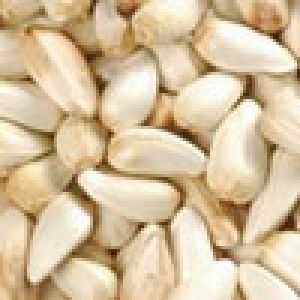
INDIAN SAFFLOWER SEEDS
Indian Safflower seed crop is harvested during February every year and is estimated at about 3,50,000 Tons. Indigenously, use of safflower oil as cooking medium is on increase due to low saturated fats. Indian safflower seed has special demand for bird feed due to its bold size and whitish colour.
...more
INDIAN HPS GROUNDNUT KERNELS
ndia is one of the largest producer of Groundnuts in the world. Indian groundnuts are available in different varieties: i.e. Bolds or Runners, Javas or Spanish and Red Natals; and have a rich nutty flavour, sweet taste, crunchy texture and a relatively longer shelf life. Groundnuts in India are available throughout the year due to a two-crop cycle harvested in March and October. On an average, India produces 7- 8 million tons of groundnuts (unshelled) every year. In fact, considering the current export figures, India has a much larger potential to supply high quality groundnuts to the international buyer. The awareness and concern for quality amongst the Indian groundnut shellers and processors are growing steadily. Multiple sorting and grading are fast becoming a norm. Indian shippers have the capability to prepare and supply edible peanuts conforming to highest standards.
...more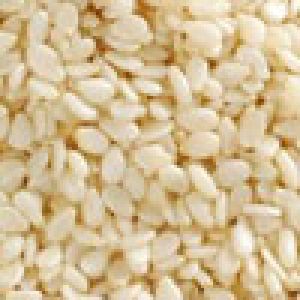
Hulled Sesame Seed
Hulling is done mechanically and manually, colour sortexed and meeting required global standards, top grade product for round the year shipments. Indian hulled sesame seeds now find market for both wide range of edible purposes.
...more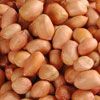
Groundnut Kernels
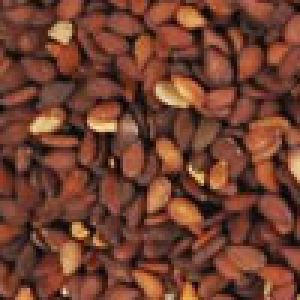
CRUSHING QUALITY SESAME SEED
Mixed Grade (Brown, Brown / Black, from Whitish) Oil Min 48 pct FFA Max 2 pct Purity Min 98 pct or 99 pct
...more
Castor Oil
Castor oil is generally a non-edible vegetable oil obtained by pressing the seeds of the castor oil plant (Ricinuscommunis). It is a triglyceride in which approximately 90 percent of fatty acid chains are ricinoleate. Oleate and linoleates are the other significant components. Castor oil and its derivatives are used in the manufacturing of soaps, lubricants, hydraulic and brake fluids, paints, dyes, coatings, inks, cold resistant plastics, waxes and polishes, nylon, pharmaceuticals and perfumes. Castor oil is famous as a source of ricinoleic acid, a monounsaturated, 18-carbon fatty acid. Among fatty acids, ricinoleic acid is unusual in that it has a hydroxyl functional group on the 12th carbon. In the food industry, castor oil (food grade) is used in food additives, flavorings, candy (e.g., polyglycerolpolyricinoleate or PGPR in chocolate), as a mold inhibitor, and in packaging. Polyoxyethylated castor oil is also used in the food industries. In India, Pakistan, Nepal and Bangladesh, food grains are preserved by applying castor oil. It stops rice, wheat, and pulses from rotting. For example the legume toor dal is commonly available coated in oil for extended storage. The United States Food and Drug Administration (FDA) has categorized castor oil as "generally recognized as safe and effective" (GRASE) for over-the-counter use as a laxative with its major site of action the small intestine where it is digested into ricinoleic acid. StatisticsMore Exports Production International Prices Oilseed Crop Report MSP EventsMore Alimentaria Mexico-2018 ...
...moreBe first to Rate
Rate ThisOpening Hours